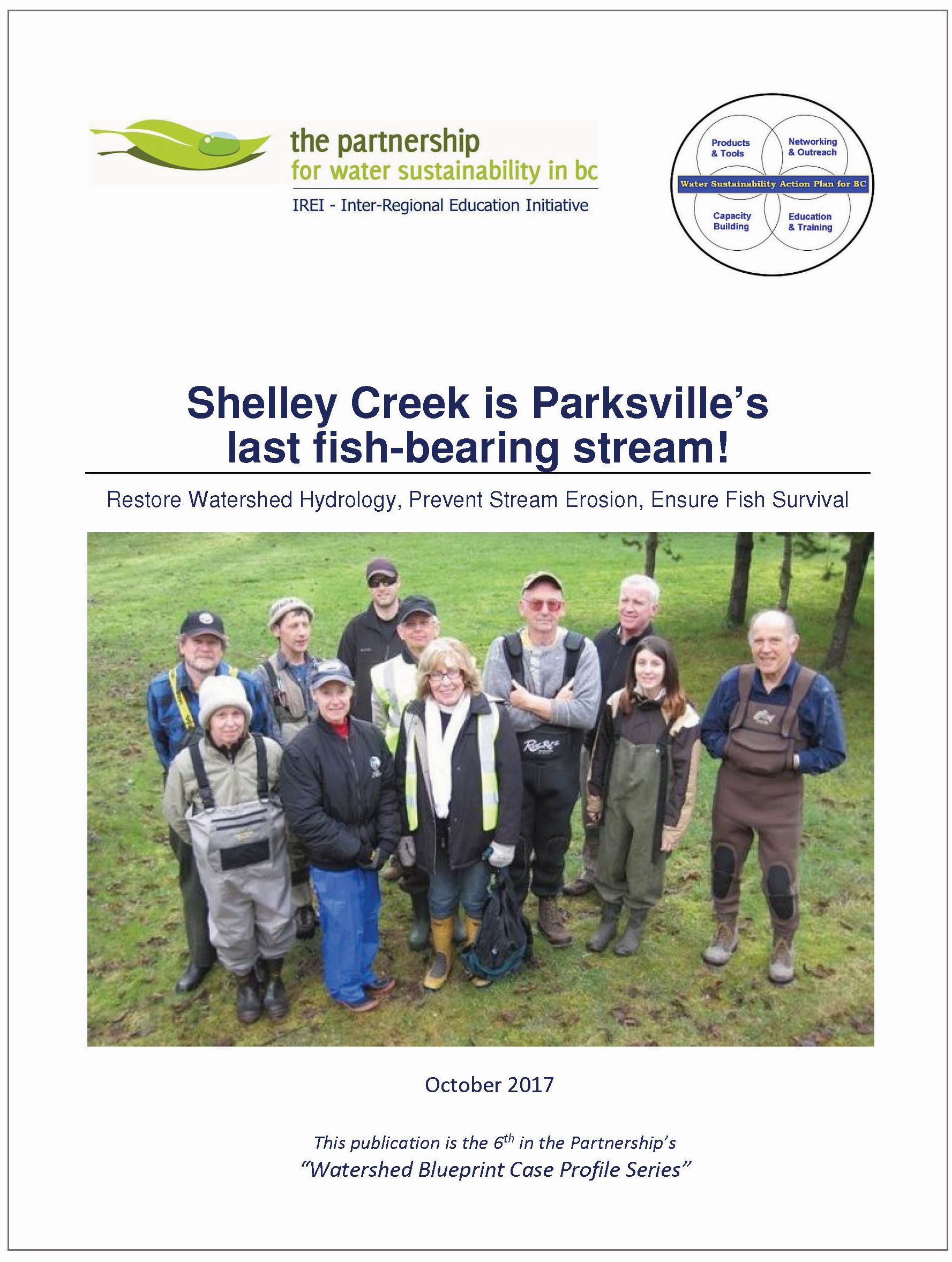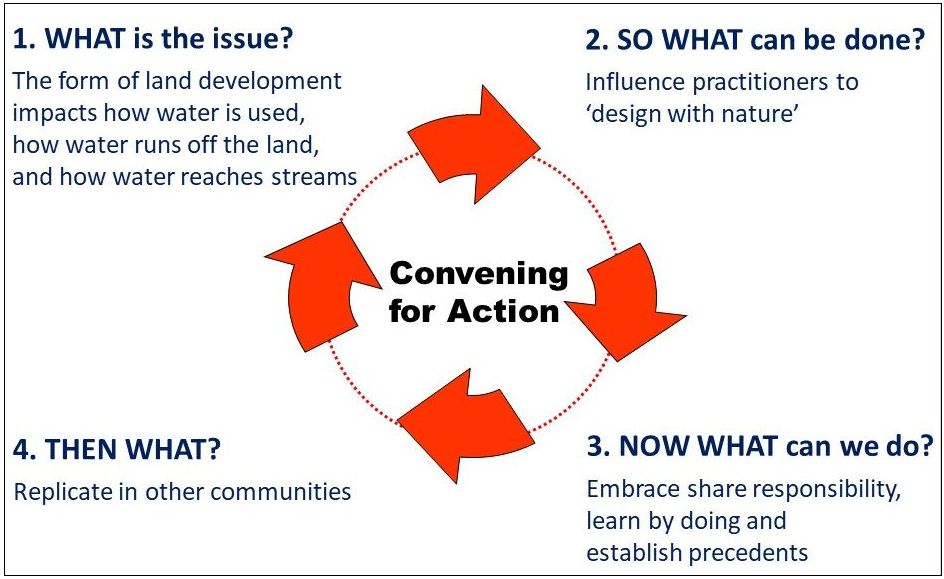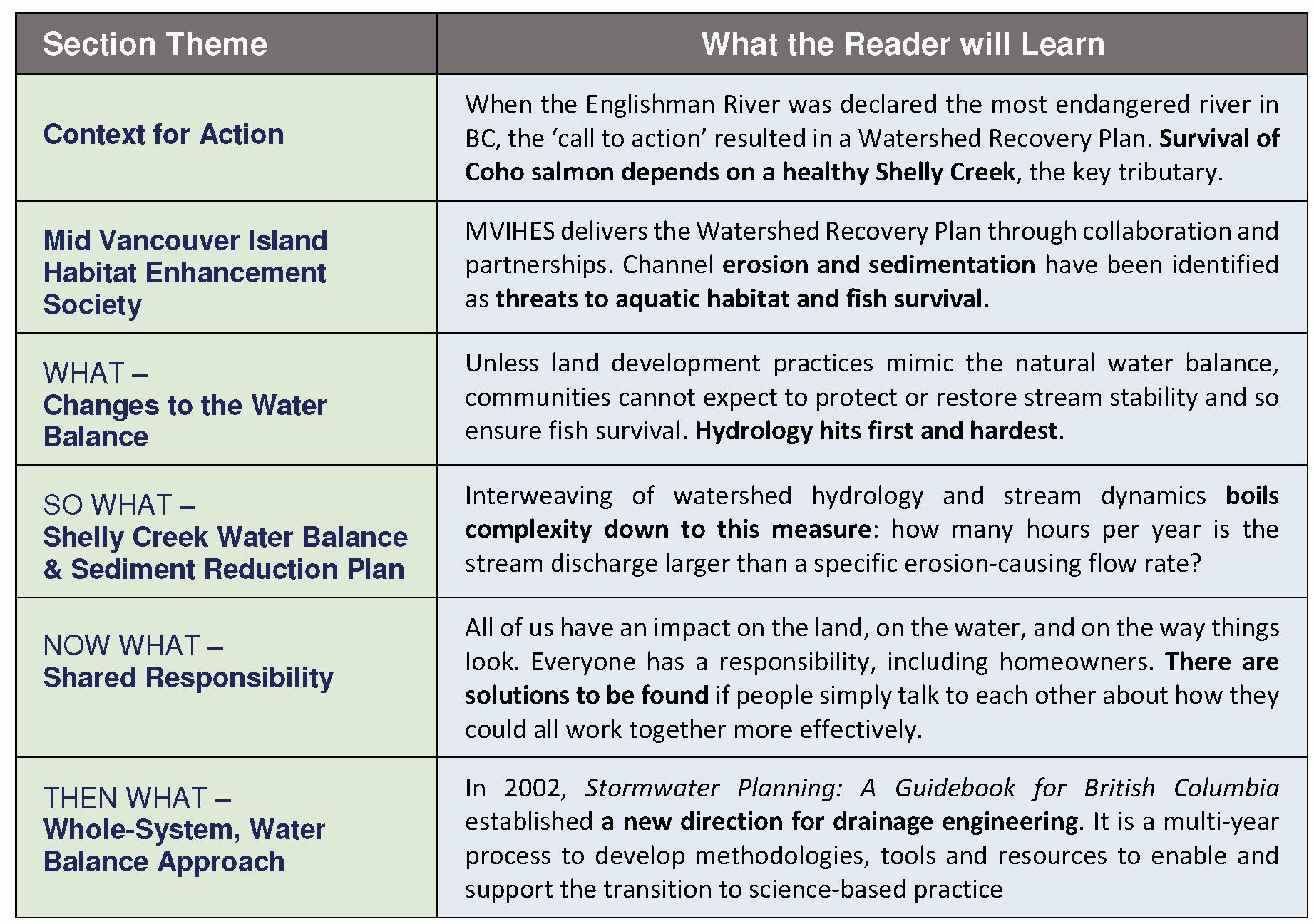Watershed Case Profile Series: Shelly Creek is the City of Parksville's last fish-bearing stream! (October 2017)
Note to Reader:
In October 2017, the Partnership for Water Sustainability in British Columbia released the 6th in the Watershed Case Profile Series. It tells the story of how the Mid Vancouver Island Habitat Enhancement Society is leading by example.

DOWNLOAD: https://waterbucket.ca/rm/files/2017/10/Shelly-Creek-Water-Balance-Demonstration_Oct2017.pdf
Restore Watershed Hydrology, Prevent Stream Erosion,
Ensure Fish Survival
 “Context is everything!,” wrote Kim Stephens, Partnership Executive Director, in the preface to Shelly Creek is the City of Parksville’s last fish-bearing stream!
“Context is everything!,” wrote Kim Stephens, Partnership Executive Director, in the preface to Shelly Creek is the City of Parksville’s last fish-bearing stream!
The Partnership is one of five organizations that co-funded development of the Shelly Creek Water Balance & Sediment Reduction Plan. The Pacific Salmon Foundation was the primary funder. The other three funders comprised the Mid Vancouver Island Habitat Enhancement Society, City of Parksville and the Regional District of Nanaimo.
Englishman River / Shelly Creek
“Shelly Creek is a tributary of the Englishman River, a major watershed system on the east coast of Vancouver Island. Shelly Creek is important to salmonids, and this is why it is necessary to understand what is causing the Shelly Creek stream channel to fill with sediment, as well as what can be done to ensure fish survival over time.
“In 1999 the Englishman River was first declared to be one of the most endangered rivers in BC. Extinction of the fisheries resource was viewed as a very real possibility. This was the catalyst for action. It resulted in two transformational outcomes: implementation of the Englishman River Watershed Recovery Plan (2001); and creation of the Mid Vancouver Island Habitat Enhancement Society (MVIHES).”
A Voice for the Community
“Fast forward to the present. Through their involvement in MVIHES, community stewardship volunteers are demonstrating what it means to embrace ‘shared responsibility’ and take the initiative to lead by example,” continued Kim Stephens.
“A paramount goal is to “get it right” in the stream channel. Their challenge is to move from stop-gap remediation of in-stream problems to long-term restoration of a properly functioning watershed.
“MVIHES has established a provincial precedent with the Shelly Creek Water Balance & Sediment Reduction Plan; and this will have reverberations as the “Shelly Creek story” becomes well-known.”
Reflections on Moving from Awareness to Action
“The Shelly Creek experience foreshadows that an informed stream stewardship sector may prove to be a difference-maker that instigates and accelerates implementation of the ‘whole-system, water balance’ approach in the Georgia Basin region and beyond,” concluded Kim Stephens.
“As a co-funder, the Partnership is thrilled to have contributed to the Shelly Creek Plan. Our commitment to the Shelly Creek stream stewardship volunteers is to tell their story far and wide. This Watershed Case Profile is the launch of the storytelling process!”
Table of Contents
The table is a synopsis. It distills the essence of each section into a succinct statement. These create a storyline. Readers are asked to pause and reflect on them before reading the story itself.
To Learn More:
To download the 6th in the Watershed Case Profile Series, click on Shelly Creek is Parksville’s last fish-bearing stream! – Restore Watershed Hydrology, Prevent Stream Erosion, Ensure Fish Survival.




